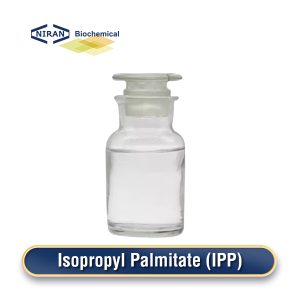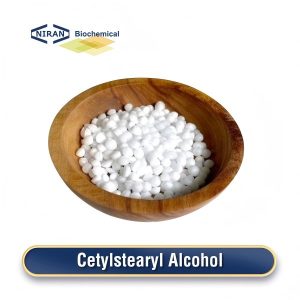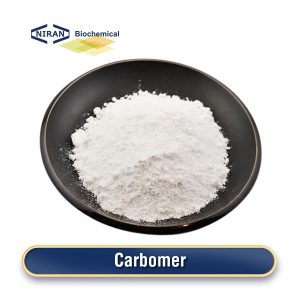Polypropylene Glycol (PPG)
- CAS Number: 25322-69-4
- Chemical Formula: (C3H6O)n
- MOQ: 1000KG
- Shelf Life: 2 years
- Synonyms: Propylene Glycol Homopolymer, Polypropylene oxide, Poly(propylene glycol)
Product Description
What Is Polypropylene Glycol?
Polypropylene Glycol (PPG) is a water-insoluble, non-toxic polymer that is primarily used as a base for manufacturing surfactants, lubricants, and coatings. It is produced by polymerizing propylene oxide, and its molecular weight can vary based on the polymerization process, affecting its viscosity and properties. PPG is commonly used in the formulation of products in industries such as cosmetics, pharmaceuticals, automotive, and industrial applications.
Preparation Method:
The production of PPG involves the polymerization of propylene oxide (PO) with a catalyst, typically a strong base such as sodium hydroxide (NaOH). The process involves adding PO to a reactor under controlled conditions, where it reacts with itself to form long chains, resulting in the production of polypropene glycol. The molecular weight of the PPG is controlled by adjusting the ratio of PO to the catalyst, thus allowing the customization of its properties for different applications.
Related Parameters:
| Specifications | Appearance
(25°C) |
Color and lustre
Pt-Co |
Hydroxyl value
mgKOH/g |
Molecular weight | Acid value
mgKOH/g |
Water
(%) |
PH(1% water solution) |
| PPG-200 | Colorless transparent oily viscous liquid | ≤20 | 510~623 | 180~220 | ≤0.5 | ≤0.5 | 5.0~7.0 |
| PPG-400 | Colorless transparent oily viscous liquid | ≤20 | 255~312 | 360~440 | ≤0.5 | ≤0.5 | 5.0~7.0 |
| PPG-600 | Colorless transparent oily viscous liquid | ≤20 | 170~208 | 540~660 | ≤0.5 | ≤0.5 | 5.0~7.0 |
| PPG-1000 | Colorless transparent oily viscous liquid | ≤20 | 102~125 | 900~1100 | ≤0.5 | ≤0.5 | 5.0~7.0 |
| PPG-1500 | Colorless transparent oily viscous liquid | ≤20 | 68~83 | 1350~1650 | ≤0.5 | ≤0.5 | 5.0~7.0 |
| PPG-2000 | Colorless transparent oily viscous liquid | ≤20 | 51~62 | 1800~2200 | ≤0.5 | ≤0.5 | 5.0~7.0 |
| PPG-3000 | Colorless transparent oily viscous liquid | ≤20 | 34~42 | 2700~3300 | ≤0.5 | ≤0.5 | 5.0~7.0 |
| PPG-4000 | Colorless transparent oily viscous liquid | ≤20 | 26~30 | 3700~4300 | ≤0.5 | ≤0.5 | 5.0~7.0 |
| PPG-6000 | Colorless transparent oily viscous liquid | ≤20 | 17~20.7 | 5400~6600 | ≤0.5 | ≤0.5 | 5.0~7.0 |
| PPG-8000 | Colorless transparent oily viscous liquid | ≤20 | 12.7~15 | 7200~8800 | ≤0.5 | ≤0.5 | 5.0~7.0 |
Recommended Dosage of Polypropylene Glycol:
| Applications | Dosage |
| Lubricants & Greases | 5%-20% |
| Cosmetics & Personal Care | 1%-8% |
| Pharmaceuticals | 0.5%-3% |
| Surface Coatings | 3%-12% |
| Automotive & Industrial Applications | 2%-5% |
| Food & Beverages (approved grades) | 0.1%-1.5% |
| Polyurethane Foam Manufacturing | 4%-10% |
| Deicing Fluids | 10%-25% |
Polypropylene Glycol Has Wide Range of uses:
Lubricants and Greases
Used in industrial lubricants and greases for viscosity stability, enhanced pressure resistance, and improved machinery performance.
Cosmetics and Personal Care
Acts as a humectant and emulsifier in creams, lotions, and conditioners, helping retain moisture and improve product texture.
Pharmaceuticals
Serves as a solubilizer and stabilizer in topical creams and ointments, improving the bioavailability of poorly soluble drugs.
Surface Coatings
Used in paints and coatings to reduce viscosity, enhance spreadability, and improve durability.
Polyurethane Foam Manufacturing
An essential component of stiff and flexible polyurethane foams, which offer strength and insulating qualities for uses such as car seats and insulation.
Food and Beverage
Acts as an emulsifier and stabilizer in beverages, sauces, and dairy products, ensuring uniform consistency.
Deicing Fluids
Lowers the freezing point in deicing fluids, ensuring smooth operations in cold weather, particularly in aviation and roadways.
Automotive and Industrial Applications
Used in antifreeze and brake fluids, offering stability and non-corrosive properties for high-performance automotive use.
User Asked Question:
Q: How does polyethylene glycol (PEG) vary from polypropylene glycol (PPG)?
A: Polypropylene Glycol (PPG) has a lower molecular weight and is primarily used in lubricants, coatings, and surfactants, providing properties like low volatility and good solubility. On the other hand, Polyethylene Glycol (PEG) is commonly used in pharmaceuticals, cosmetics, and food products, offering excellent water solubility and versatility, often serving as a base for ointments, creams, and drug formulations.




